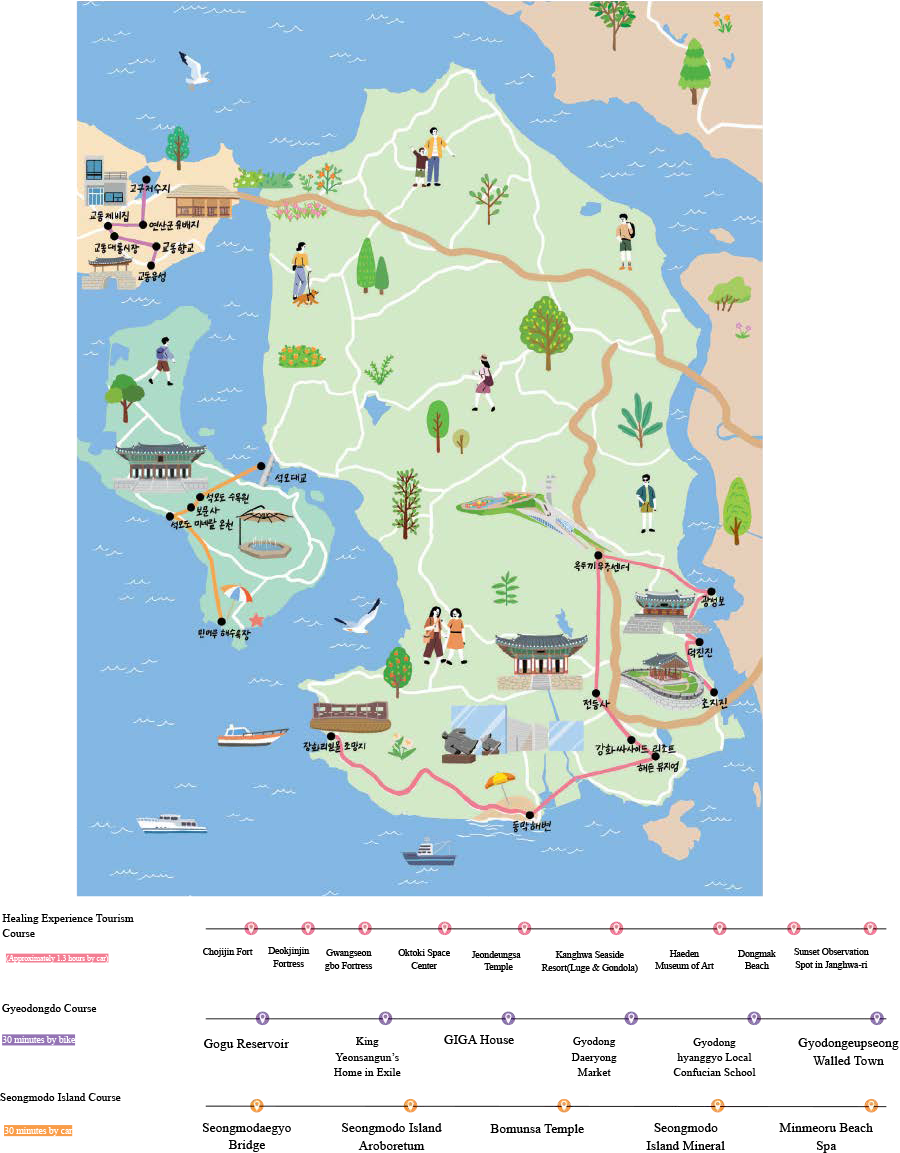
- Water, Nature and Humankind
- Travel for Save the Earth
-
Travel back in time to the
‘special days of the past’!
The old downtown area of Ganghwa,
an eco-friendly tourist attraction
and great place for strolling!- Written and photographed by. Lee Si-mok(travel writer)
- If you are looking for a new way to enjoy Ganghwado Island with a long history, then taking a leisurely stroll around the old downtown area is a great idea. The old downtown area is a treasure trove of Korean history filled with uniquely local scenes, an old-world atmosphere, and stories that have been passed down from generation to generation. It is the perfect place to take a glimpse into Ganghwado Island’s past as “special scenes from the olden days” can be found all in one small area within easy walking distance, making it a great destination for eco-friendly hiking. Reduce carbon emissions and enjoy more walking fun. Join the Guided Walking Tour in Old Downtown Ganghwado Island. A culture and tour guide will help you learn all about Korean history from the Goryeo period to modern times.
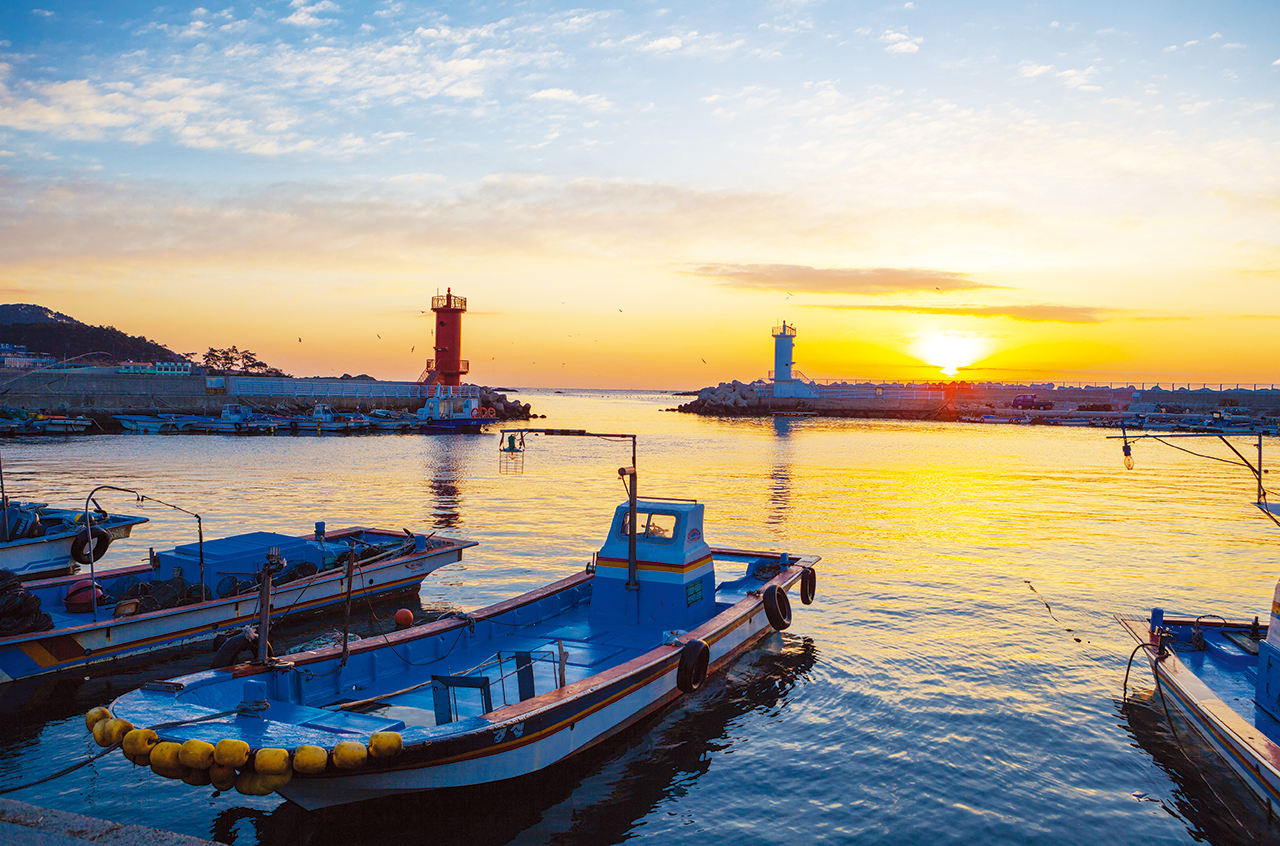
Travel back in time on foot to meet ‘the old Ganghwado Island’
Alleys, traces of history, olden days, newtro, coexistence, accumulation, regeneration… These are some of the key words associated with the old downtown area of Ganghwado Island. ‘Old downtown area’ refers to a part of a city that once served as its center in the course of its formation and development, an old city center that was developed before other more recent parts of the city grew larger and busier, gradually evolving into new downtown areas. Perhaps that is why old downtown areas present an odd combination of old and new, as if they existed in another time. Over time, many stories have become woven together to create a ‘landscape of accumulated history’.
‘Scenes of accumulation’ can be appreciated best at a slow pace. The old downtown area of Ganghwa is packed with so many things to see and do within a short radius, and is easy to get around on foot. What’s more, walking around to go back in time in the old Ganghwado Island generates little or zero carbon emissions. For this reason, the old downtown area was listed as a ‘carbon-neutrality tourist destination’ last year and a walking tour program is currently available in the old downtown area.
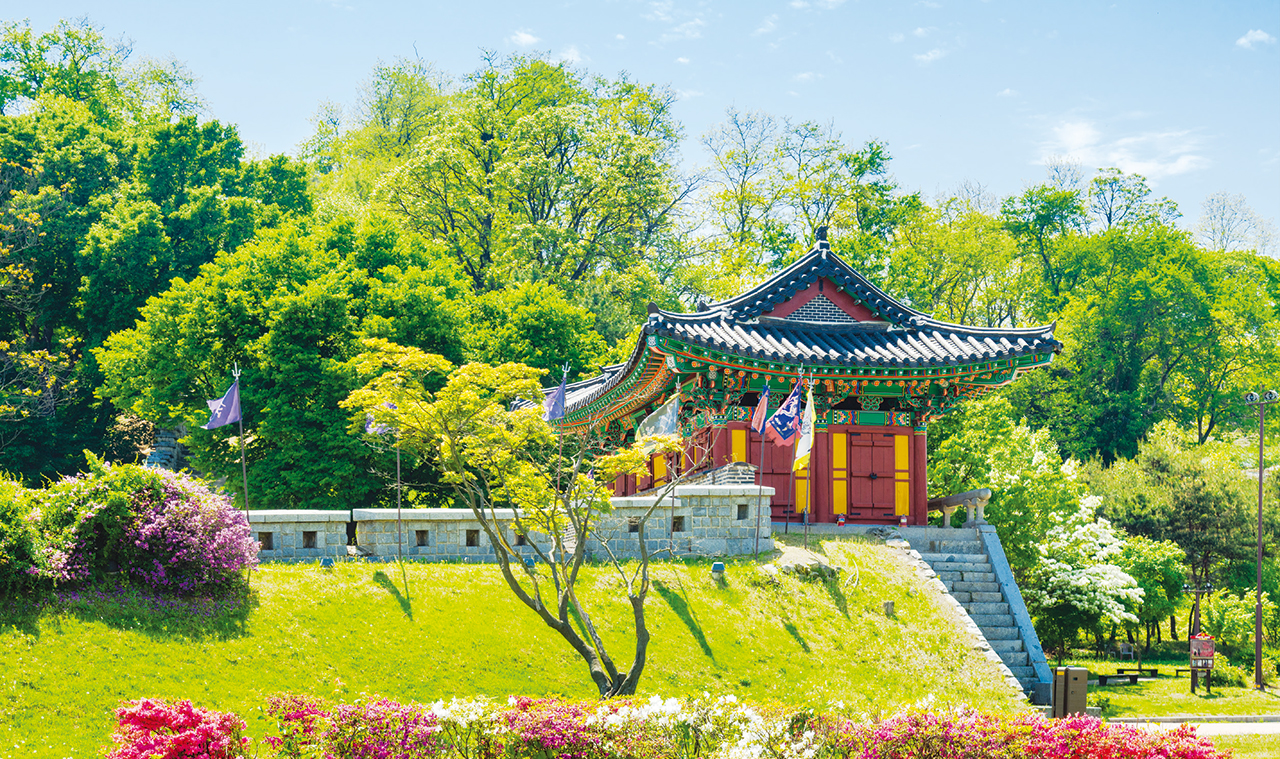 1. The South Gate of Ganghwasanseong Fortress: Here you can imagine what Ganghwado Island was like during the war with the Mongols.
1. The South Gate of Ganghwasanseong Fortress: Here you can imagine what Ganghwado Island was like during the war with the Mongols.
The time stratum in a historic town
Ganghwado Island is one of the oldest cities in Korea. Given its long history, historic relics are abundant across the island. Relics ranging from prehistoric times to the modern period tell unique stories of their own. Historic, industrial and religious relics are concentrated particularly in the old downtown area, which has accumulated a thousand years of history from the Goryeo period to the present, like geological strata. Traces of different times have piled up to form layers consisting of varying historic landscapes in this particular part of the island. For example, a magistrate’s office from the Joseon period was built upon a site of a royal palace of the Goryeo dynasty, while what used to be a textile factory in the 1930s has now been turned into a modern café. The old downtown area is all the more charming because relics mentioned in ancient records and those that are visible can be found at the same time.
Ganghwado Island is home to more than a dozen major historic relics, most of which are related to the history of the Korean Peninsula, while some are industrial relics. Among the major historic relics are a site of a royal palace of the Goryeo dynasty, the Ganghwa Anglican Church, Yongheunggung House, Ganghwahyanggyo Local Confucian School, Ganghwasanseong Fortress, the Ganghwa March First Independence Movement Monument, the Memorial Stone for Kim Sang-yong, and Daemyeongheon House. The island’s industrial relics include Sochang Experience Center, the former sites of Joyang Bangjik Textile and Simdo Bangjik Textile, and the stone walls of Ehwa Silk. All of these relics are within a one kilometer radius of Yongheunggung Park, which is at the center of the city, so you can check them out as you stroll around. You will find yourself traveling back and forth in time and space as you go back to the relatively recent 1970s, and then further back to the Joseon period, before coming back to a local bookstore set against a lovely background, and then going even further back to the Goryeo period.
Alleys and streets can lead you anywhere in the old down town. There is no set course to follow. If you prefer to follow a clearly-defined course, however, there are six walking courses that the provincial government recommends. You can briefly review the glorious history of the Goryeo dynasty as you walk along “the Goryeo Palace Fortress Course”. The Road of the King is a time-travel course from the Goryeo period to the modern Korea and the Textile Industry Course will help you look back at the history of the textile industry that flourished in Ganghwado Island. “The Enlightenment & Modern Korea Course brings together the past and future while the Independence Movement Course features patriotic martyrs of Ganghwado Island. Most popular of these courses are the Road of the King, a combination of top tourist attractions in the old down town and the Textile Industry Course that forms a landscape unique to Ganghwado Island. The highlights of the Road of the King Course are the site of a Goryeo royal palace where you can easily imagine the Goryeo dynasty fighting against the Mongols, Yongheunggung House, a royal residence where King Cheoljong lived prior to his coronation, and Ganghwa Anglican Church that combines architectural styles of the East and the West.
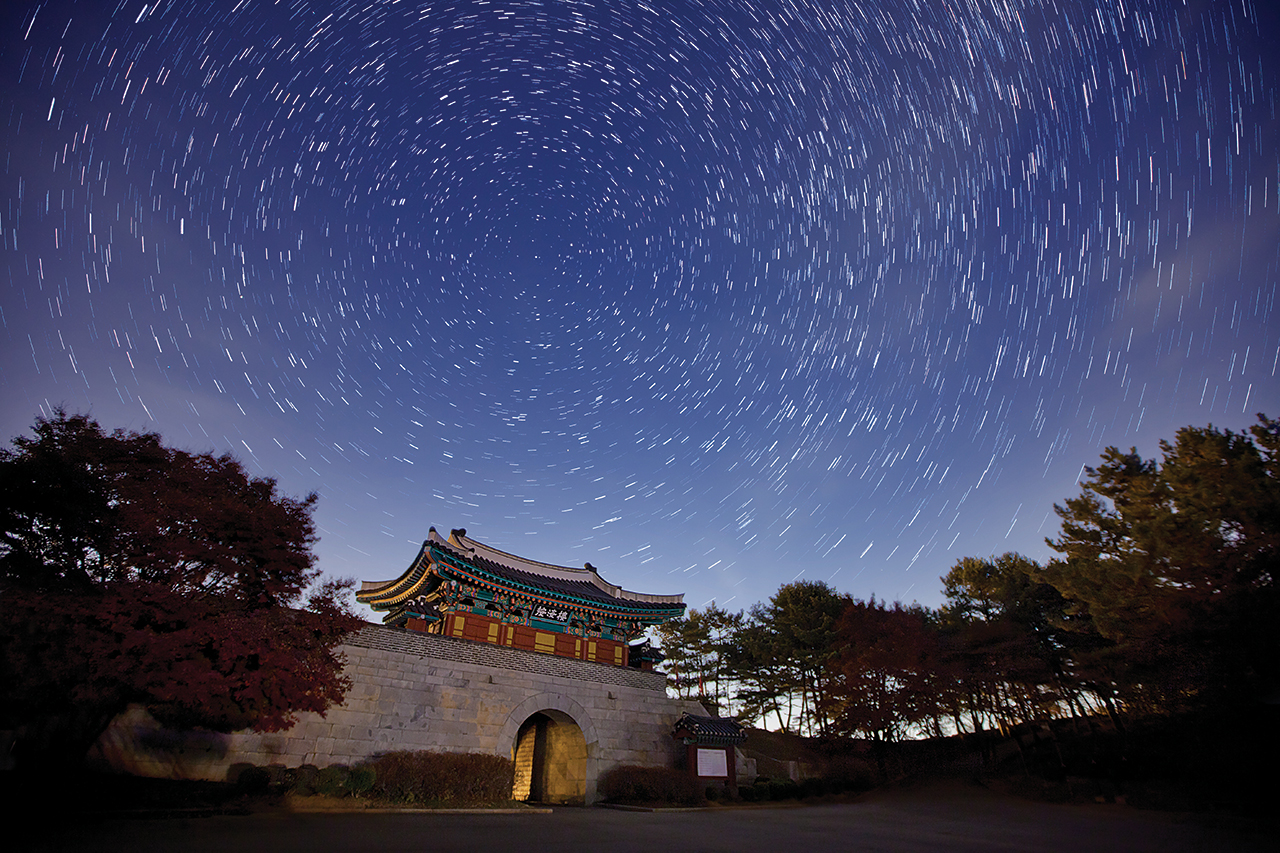 2. A starry nighttime view of Anhaeru Gate
2. A starry nighttime view of Anhaeru Gate
Upcycling of the Past
People often say, “Those were the days”. When people talk about the past, they often view the past as the prime time of their life. If you are curious about what Ganghwado Island was like in the past, you should walk along the Textile Industry Course and learn about the past of Ganghwado Island. The textile industry enjoyed such a great boom in Ganghwado Island in the past that the entire downtown area was filled with cotton factories. Simdo Bangjik Textile was the largest textile factory while Joyang Bangjik Textile was the first textile company to be established in Ganghwado Island. Other textile companies that operated on the island include Pyeonghwa Bangjik Textile and Ehwa Silk. However, most of them have since disappeared into the mists of time, and only two of them remain after having been upcycled. Pyeonghwa Bangjik Textile has been remodeled into Sochang Experience Center, a cultural space, and Joyang Bangjik Textile has been reborn as a café.
At Sochang Experience Center, you can make your own Sochang handkerchief and learn about the traditional Korean tea ceremony and weaving. At the end of your walking tour, you can relax in the café and art gallery at Joyang Bangjik Textile, where many traces of the old textile factory can still be found. The factory was even used as a pickled radish factory and a fermented fish factory before being abandoned for a while; and some clear evidence of its history has been incorporated into the interior design of the café. So it’s the ideal spot to wrap up your tour.
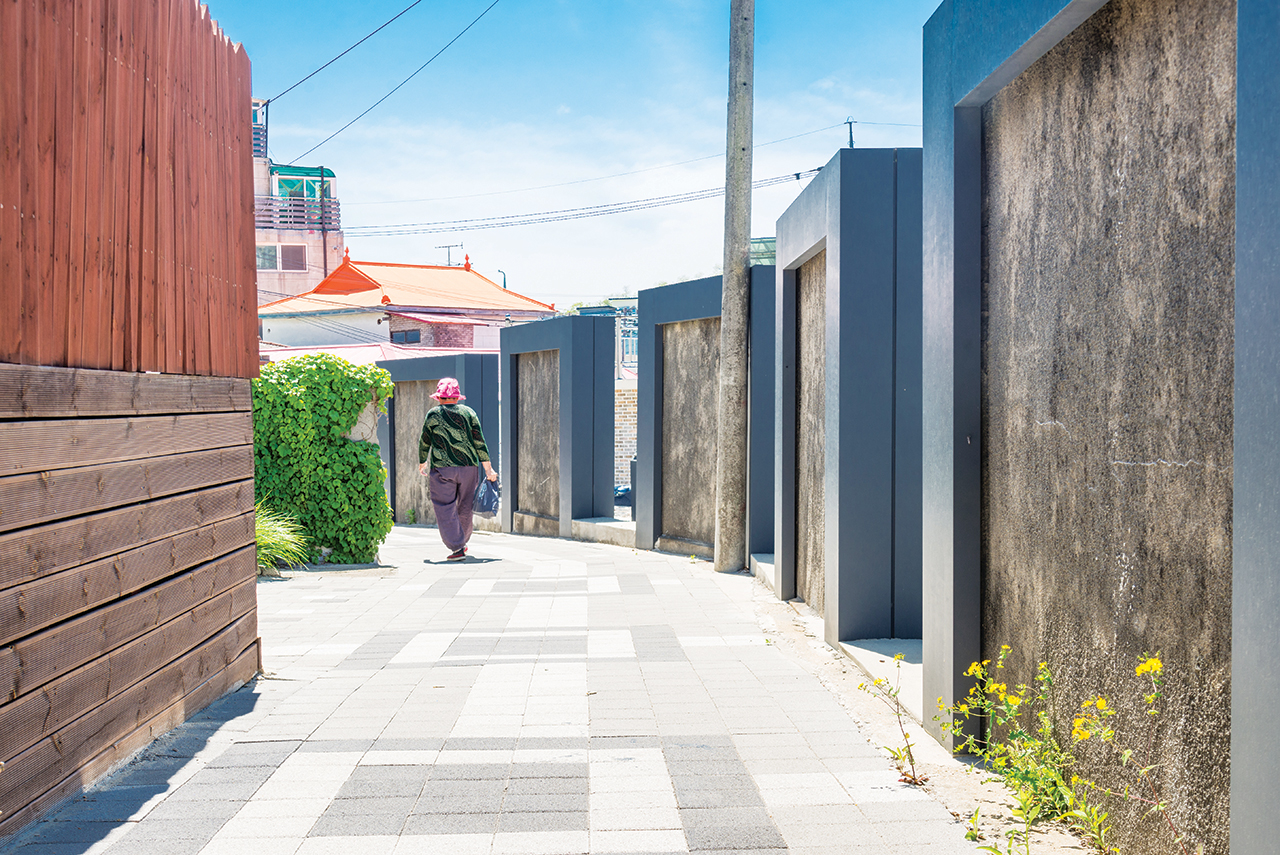 3. The stone walls of Ehwa Silk, where you can learn about the history of the Korean textile industry.
3. The stone walls of Ehwa Silk, where you can learn about the history of the Korean textile industry.
- How to practice carbon neutrality during your tour
- Four Promises to Preserve Ganghwado Island
-

-
How to make the most out of your trip to Ganghwado Island
_ Guided walking tour of the old downtown area & Ganghwa Story Tour
Your tour of old downtown Ganghwa will be even more fun and meaningful if you use the guided walking tour program. The walking tour, which is guided by a culture and tourist guide, takes in the old alleyways in Gwangcheong-ri and Shinmun-ri in Ganghwa-eup, Yongheunggung House, Ganghwa Catholic Church, the Ganghwa March First Independence Movement Monument, the site of a royal palace of the Goryeo dynasty, Ganghwa Anglican Church, the memorial stone for the Catholic labor movement, the stone walls of Ehwa Silk, the Memorial Stone for Kim Sang-yong, and the former site of Simdo Bangjik Textile. The course is 2.6 kilometers long and takes about two hours to complete. You can reserve a place on the guided tour at the Naver portal. If you make a reservation, you can also join the Ganghwa Story Tour, which features a bike ride around the island.
For more information, please call the Culture and Tourism Division of Ganghwa County at 032-930-3568.
 Ganghwado Island’s Top Attractions
Ganghwado Island’s Top Attractions

-
The ideal place to take a pause and relax
Haeden Museum of Art
The museum was built underground to preserve the surrounding natural environment and landscape. The Korean Institute of Architects selected the museum for inclusion in the 2013 Top 7 Architecture List for its beautiful architectural design. The sculpture titled Torso de Ikaro by Igor Mitoraj makes the Mirror Garden even more special. An exhibition titled Meta- Hwa Yang Yeong Hwa(In the Mood for Love) is being held from April 1 to August 28, 2022 in Exhibition Halls 1 to 6, while the “2022 New Generation Relay” is taking place from March 2 to December 18 in Exhibition Hall 7.
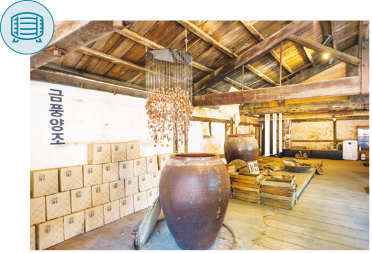
-
Making makgeolli at a 100-year old brewery
Geumpung Brewery
Since its opening in 1931, the brewery has been making makgeolli according to a traditional recipe. As soon as you step into the brewery, you can smell the traditional Korean rice wine. The brewery has retained its original structure, for which it has been designated as a registered cultural property. The old shelves and ancient clay pots seem to have their own old stories to tell. The makgeolli made here is very popular. It is brewed with organically-grown rice, with no added artificial flavors or carbonic acid, so the sweetness comes only from the rice itself. You can learn how to make makgeolli and actually make some makgeolli yourself at the brewery if you make a reservation. You can also buy makgeolli there.
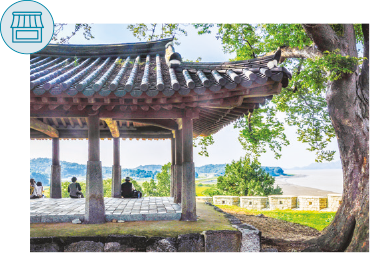
-
Scenic beauty meets taste
Weolgot Fortification & Yeonmijeong Pavilion
Why not sit in an open pavilion overlooking the ocean and enjoy the breath-taking scenic view? Inside Weolgot Fortification, which is surrounded by a retaining wall built for military purposes, is Yeongmijeong Pavilion, beside which stands a 500-year old zelkova tree that creates shade and wind as well as making the place look even more attractive and interesting. Located close to North Korea, it holds special historical significance as the venue where the Ganghwado Island Treaty was signed. Yeonmijeong Pavilion has become popular for its great view since it was featured in Feel the Rhythm of Korea, Incheon, a promotional video series released by the Korea Tourism Organization.
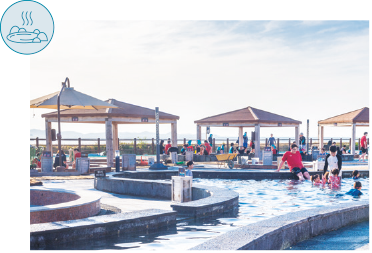
-
Outdoor Spa with a view of the Sunset over the Sea
Seongmodo Island Mineral Spa
This outdoor spa is located at Seongmodo Island Beach, where you can bathe in a hot spa while enjoying the sea breeze and admiring the sunset. You can also enjoy a great view from the roof of the building. If you look with the beach behind you, the Nunsseop Rock comes into sight, whereas if you stand looking toward the beach, you will see waves glittering on the water over the fifteen outdoor spa pools. The spa also offers diverse health benefits as you can heal various diseases while bathing in the spa. Rich in calcium and potassium, the spring water is particularly effective in alleviating arthritis and muscle pain.
 List of Tasty Eateries in Ganghwado Island
List of Tasty Eateries in Ganghwado Island
-
-
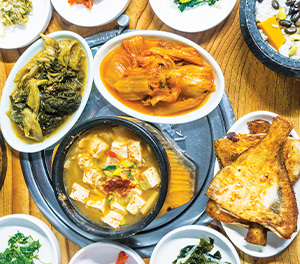
-
Seokchon Dolsotbop
This is by far the best home-meal style restaurant in the area, and has been voted No. 1 by the locals. Its signature dish is hot-pot rice topped with a generous amount of beans and cubed buttercup squash. It is served with glossy rice grown in Ganghwado Island and over 20 different side dishes including grilled plaice, pan- fried turnip and, pan- fried dried radish leaves, and bitter lettuce Kimchi.
-
-
-
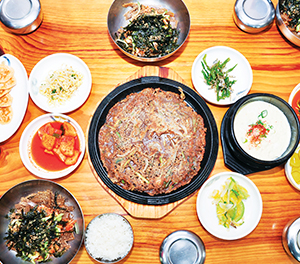
-
Wangjajeong Mukbop
This restaurant has remained on the list of top local eateries for years. Its signature dishes include chilled acorn jelly and rice soup, and acorn jelly pancakes. Most customers eat chilled acorn jelly and rice soup either in cold or hot anchovy broth together with acorn jelly pancake that is fried nice and brown.
-
-
-
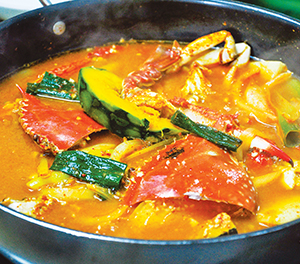
-
Chungnam Seosan House
This restaurant is known as one of the first restaurants to serve blue crab soup in the area. Its signature dishes include blue crab soup seasoned with soybean paste and cooked with buttercup squash, and blue crab steamed without cheongju or refined rice wine or soju so as to retain the pure crab flavor. After you finish the crabs in the soup, you can cook pieces of hand-pulled flour dough or instant noodles in the soup.
-
-
-
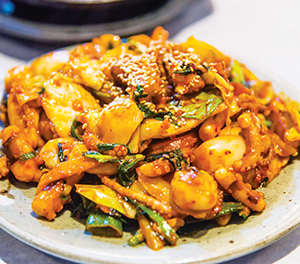
-
Todam Village
This is the most frequently searched restaurant on social media under the hashtags “Must-visit Seongmodo Island restaurants” and “Must-visit restaurants near Bomunsa Temple”. Its most popular dishes include a course meal featuring sliced raw scaled sardine salad set menu, and a course meal featuring stir-fried octopus set menu. You can enjoy a great meal at an outdoor terrace while enjoying a great panoramic view of the ocean.
-
How to enjoy Ganghwado Island to the fullest
Choose one or two of the following three themed courses to walk and enjoy a combination of the island’s beautiful natural environment and culture.
